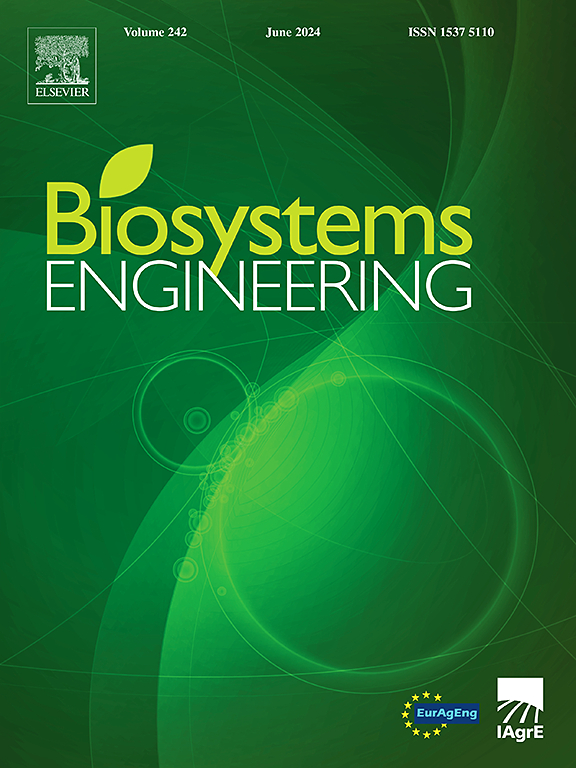Estimation of tunnel fan operating conditions for a laying hen house based on the ventilation resistance characteristics
IF 5.3
1区 农林科学
Q1 AGRICULTURAL ENGINEERING
引用次数: 0
Abstract
Tunnel-ventilated laying houses need adequate ventilation rates to abate heat stress in hot climates. However, due to the underestimation of the ventilation resistance caused by the caged-hen occupied zone (COZ), the differential static pressure (DSP) of fans determined empirically is lower than the actual value, resulting in insufficient ventilation rate in the laying house. In this study, field measurements of the ventilation rate and DSP were conducted with various operating fans in a commercial layer house. A ventilation resistance curve was developed according to the results of computational fluid dynamics (CFD) simulations on the DSP distribution. The ventilation rate was estimated by the number of operating fans, resistance curve and fan performance curve. When the number of operating fans increased from 16 to 24, the fan ventilation rate decreased by 24.56 %, and the fan DSP increased from 41.6 to 67.7 Pa. The resistance caused by COZ contributed more than 60 % to the fan DSP. The DSP distribution near the fan was not uniform. The measured fans and fan DSP measuring point were in the low DSP area, resulting in the predicted ventilation rate being lower than the measured ventilation rate. The error of ventilation rate predicted by the in situ fan performance curve (E 3.47 %–6.51 %; RMSE 8.7) was higher than that predicted by the designed fan performance curve (E 0.77 %–4.72 %; RMSE 4.49). This study provides a methodological basis for accurately developing the ventilation resistance curve of the tunnel ventilated laying house.
基于通风阻力特性的蛋鸡鸡舍隧道风机运行工况估算
隧道通风敷设房屋需要足够的通风率,以减轻炎热气候下的热应力。然而,由于对笼鸡占用区(COZ)造成的通风阻力估计不足,经验确定的风机静压差(DSP)低于实际值,导致铺设房内通风量不足。在本研究中,在一个商业鸡舍内,对不同运行风机的通风量和DSP进行了现场测量。根据计算流体动力学(CFD)对DSP分布的模拟结果,建立了通风阻力曲线。通过风机运行数、阻力曲线和风机性能曲线估算通风量。当风机运行数从16台增加到24台时,风机通风量下降24.56%,风机DSP从41.6 Pa增加到67.7 Pa。COZ引起的电阻对风扇DSP的贡献率超过60%。风机附近的DSP分布不均匀。实测风机和风机DSP测点均处于低DSP区域,导致预测通风量低于实测通风量。现场风机性能曲线预测通风量的误差(E为3.47% ~ 6.51%;RMSE 8.7)高于设计风机性能曲线预测值(E 0.77% ~ 4.72%;RMSE 4.49)。该研究为准确绘制隧道通风敷设房的通风阻力曲线提供了方法依据。
本文章由计算机程序翻译,如有差异,请以英文原文为准。
求助全文
约1分钟内获得全文
求助全文
来源期刊

Biosystems Engineering
农林科学-农业工程
CiteScore
10.60
自引率
7.80%
发文量
239
审稿时长
53 days
期刊介绍:
Biosystems Engineering publishes research in engineering and the physical sciences that represent advances in understanding or modelling of the performance of biological systems for sustainable developments in land use and the environment, agriculture and amenity, bioproduction processes and the food chain. The subject matter of the journal reflects the wide range and interdisciplinary nature of research in engineering for biological systems.
 求助内容:
求助内容: 应助结果提醒方式:
应助结果提醒方式:


